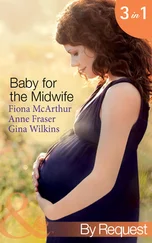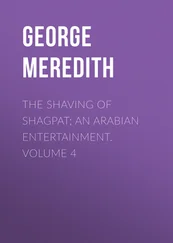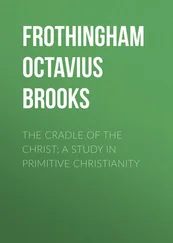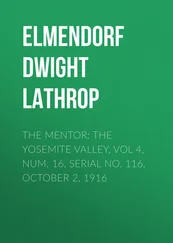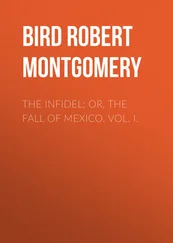Anne Blunt - A Pilgrimage to Nejd, the Cradle of the Arab Race. Vol. 2 [of 2]
Здесь есть возможность читать онлайн «Anne Blunt - A Pilgrimage to Nejd, the Cradle of the Arab Race. Vol. 2 [of 2]» — ознакомительный отрывок электронной книги совершенно бесплатно, а после прочтения отрывка купить полную версию. В некоторых случаях можно слушать аудио, скачать через торрент в формате fb2 и присутствует краткое содержание. ISBN: , Жанр: foreign_antique, foreign_prose, Путешествия и география, на английском языке. Описание произведения, (предисловие) а так же отзывы посетителей доступны на портале библиотеки ЛибКат.
- Название:A Pilgrimage to Nejd, the Cradle of the Arab Race. Vol. 2 [of 2]
- Автор:
- Жанр:
- Год:неизвестен
- ISBN:http://www.gutenberg.org/ebooks/42217
- Рейтинг книги:4 / 5. Голосов: 1
-
Избранное:Добавить в избранное
- Отзывы:
-
Ваша оценка:
- 80
- 1
- 2
- 3
- 4
- 5
A Pilgrimage to Nejd, the Cradle of the Arab Race. Vol. 2 [of 2]: краткое содержание, описание и аннотация
Предлагаем к чтению аннотацию, описание, краткое содержание или предисловие (зависит от того, что написал сам автор книги «A Pilgrimage to Nejd, the Cradle of the Arab Race. Vol. 2 [of 2]»). Если вы не нашли необходимую информацию о книге — напишите в комментариях, мы постараемся отыскать её.
A Pilgrimage to Nejd, the Cradle of the Arab Race. Vol. 2 [of 2] — читать онлайн ознакомительный отрывок
Ниже представлен текст книги, разбитый по страницам. Система сохранения места последней прочитанной страницы, позволяет с удобством читать онлайн бесплатно книгу «A Pilgrimage to Nejd, the Cradle of the Arab Race. Vol. 2 [of 2]», без необходимости каждый раз заново искать на чём Вы остановились. Поставьте закладку, и сможете в любой момент перейти на страницу, на которой закончили чтение.
Интервал:
Закладка:
Anne Blunt
A Pilgrimage to Nejd, the Cradle of the Arab Race. Vol. 2 [of 2] / A Visit to the Court of the Arab Emir, and «our Persian Campaign.»
CHAPTER XII
“Je ne trouvai point en eux ces formes que je m’attendais à retrouver dans la patrie de Zeid el Kheil.” – Guarmani.
Nejd horses – Their rarity – Ibn Saoud’s stud – The stables at Haïl – Some notes of individual mares – The points of a Nejd head – The tribes in the Nefûds and their horses – Meaning of the term “Nejdi” – Recipe for training.
A chapter on the horses we saw at Haïl has been promised, and may as well be given here.
Ibn Rashid’s stud is now the most celebrated in Arabia, and has taken the place in public estimation of that stud of Feysul ibn Saoud’s which Mr. Palgrave saw sixteen years ago at Riad, and which he described in the picturesque paragraphs which have since been constantly quoted. The cause of this transference of supremacy from Aared to Jebel Shammar, lies in the political changes which have occurred since 1865, and which have taken the leadership of Central Arabia out of the hands of the Ibn Saouds and put it into those of the Emirs of Haïl.
Mohammed ibn Rashid is now not only the most powerful of Bedouin sheykhs, but the richest prince in Arabia; and as such has better means than any other of acquiring the best horses of Nejd, nor have these been neglected by him.
The possession of thoroughbred mares is always among the Arabs a symbol of power; and with the loss of their supreme position in Nejd, the Ibn Saouds have lost their command of the market, and their stud has been allowed to dwindle. The quarrels of the two brothers, Abdallah and Saoud, sons of Feysul, on their father’s death, their alternate victories and flights from the capital, and the ruin wrought on them both by the Turks, broke up an establishment which depended on wealth and security for its maintenance; and at the present moment, if common report speaks true, hardly a twentieth part of the old stud remains at Riad. The rest have passed into other hands.
That Feysul’s stud in its day was the best in Arabia is probable, and it may be that no collection now to be found there has an equal merit; but there seems little reason for supposing that it differed in anything but degree from what we ourselves saw, or that the animals composing it were distinct from those still owned by the various Bedouin tribes of Nejd. All our inquiries, on the contrary (and we spared no occasion of asking questions), tend to show that it is a mistake to suppose that the horses kept by the Emirs of Riad were a special breed, preserved in the towns of Aared from time immemorial, or that they differed in any way from those bred elsewhere in Central Arabia. They were, we were repeatedly assured, a collection recruited from the various tribes of the Nefûds, – a very fine collection, no doubt, but still a collection. Every Bedouin we have asked has laughed at the idea of there being a special Nejd breed , only found in Aared. In answer to our questions we were informed that in Feysul’s time emissaries from Riad were constantly on the look-out for mares wherever they could find them; and that the Emir had often made ghazús against this and that tribe, with no other object than the possession of a particular animal, of a particular breed. The tribe from which he got the best blood, the Hamdani Simri and the Kehilan el-Krush, was the Muteyr (sometimes called the Dushan), while the Beni Khaled, Dafir, Shammar, and even the Ánazeh, supplied him with occasional specimens. Abdallah ibn Saoud, his successor, still retains a few of them, but the bulk of the collection was dispersed, many of the best passing into the hands of Metaab and Bender, Mohammed ibn Rashid’s predecessors. Mohammed himself follows precisely the same system, except that he does not take by force, but on payment. He makes purchases from all the tribes around, and though he breeds in the town, his collection is constantly recruited from without. Were this not the case, no doubt, it would soon degenerate, as town-bred horses in Arabia, being stall-fed and getting no sort of exercise, are seldom fit for much. There is a false notion that the oases, such as those of Jebel Shammar and Aared, are spots especially adapted for the rearing of horses, and that the sandy wastes outside contain no pasture. But the very reverse of this is the case. The oases in which the towns stand, produce nothing but date palms and garden produce, nor is there a blade of grass, or even a tuft of camel pasture in their neighbourhood. The townspeople keep no animals except a few camels used for working the wells, and now and then a donkey. Even these must be fed either on corn or dates, which none but the rich can afford. Horses are a luxury reserved only for princes, and even the richest citizens do their travelling from village to village on foot. Longer journeys are performed on dromedaries brought in from the desert for the purpose, which are either the property of Bedouins or held with them by the citizens on shares.
The Nefûds, on the other hand, contain pasture in abundance, not only for camels, but for sheep and horses, and it is in the Nefûds that all these are bred. Ibn Rashid goes every spring with the bulk of his live stock to the desert, and leaves them during part of the summer with the tribes, only a few animals being reserved for use in the town. It cannot be too strongly insisted upon, that the upper plateaux of Nejd, where the towns and villages are found, are a stony wilderness almost entirely devoid of vegetation, while the Nefûds afford an inexhaustible supply of pasture. The want of water alone limits the pastoral value of these, for the inhabited area is necessarily confined to a radius of twenty or thirty miles round each well, – and wells are rare. These facts have not, I think, been hitherto sufficiently known to be appreciated.
With regard to Ibn Rashid’s collection at Haïl we looked it over three or four times in the stables, and saw it out once on a gala day, when each animal was made to look its best. The stables consist of four open yards communicating with each other, in which the animals stand tethered each to a square manger of sun-dried brick. They are not sheltered in any way, but wear long heavy rugs fastened across the chest. They are chained by one or more feet to the ground, and wear no headstalls. It being winter time and they ungroomed, they were all in the roughest possible condition, and, as has been mentioned, our first impression was one of disappointment. When at Haïl they are given no regular exercise, remaining it would seem for weeks together tied up thus, except for a few minutes in the evening, when they are led to drink. They are fed almost entirely on dry barley. In the spring only, for a few weeks, they eat green corn grown on purpose, and then are taken to the Nefûd or on ghazús. It is surprising that they should be able to do their work under such conditions.
The first yard one enters in going through the stables, contained, when we saw them, from twenty-five to thirty mares. In the second were twenty more, kept in a certain kind of condition for service in case of necessity; but even these get very little exercise. As they stand there in the yard, slovenly and unkempt, they have very little of that air of high breeding one would expect; and it requires considerable imagination to look upon them as indeed the ne plus ultra of breeding in Arabia. We made the mistake, too common, of judging horses by condition, for, mounted and in motion, these at once became transfigured.
Here may follow some descriptions of particular animals, written after one of our visits to the stud; these will give a better idea of them than any general remarks. In our notes I find: —
Читать дальшеИнтервал:
Закладка:
Похожие книги на «A Pilgrimage to Nejd, the Cradle of the Arab Race. Vol. 2 [of 2]»
Представляем Вашему вниманию похожие книги на «A Pilgrimage to Nejd, the Cradle of the Arab Race. Vol. 2 [of 2]» списком для выбора. Мы отобрали схожую по названию и смыслу литературу в надежде предоставить читателям больше вариантов отыскать новые, интересные, ещё непрочитанные произведения.
Обсуждение, отзывы о книге «A Pilgrimage to Nejd, the Cradle of the Arab Race. Vol. 2 [of 2]» и просто собственные мнения читателей. Оставьте ваши комментарии, напишите, что Вы думаете о произведении, его смысле или главных героях. Укажите что конкретно понравилось, а что нет, и почему Вы так считаете.
![Anne Blunt A Pilgrimage to Nejd, the Cradle of the Arab Race. Vol. 2 [of 2] обложка книги](/books/750183/anne-blunt-a-pilgrimage-to-nejd-the-cradle-of-the-cover.webp)
